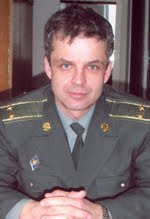Not long ago my new exhibition dedicated to Poltava of 1930-1960s has been opened in Poltava
museum of Panas Myrny
Mostly all shown pictures of Poltava were found by chance in private photo albums of the local elderly residents. Many of pictures that were taken decades ago were shown to the public for the first time. For instance, many have never seen pictures showing German POW working as construction workers in
Being a teacher in charge of a student group, I invited then to visit this exhibition. Hope they have learnt a lot of a new fascinating things about the history of
The museum itself is also very interesting
because it preserves a spirit and a way of living of Poltava









